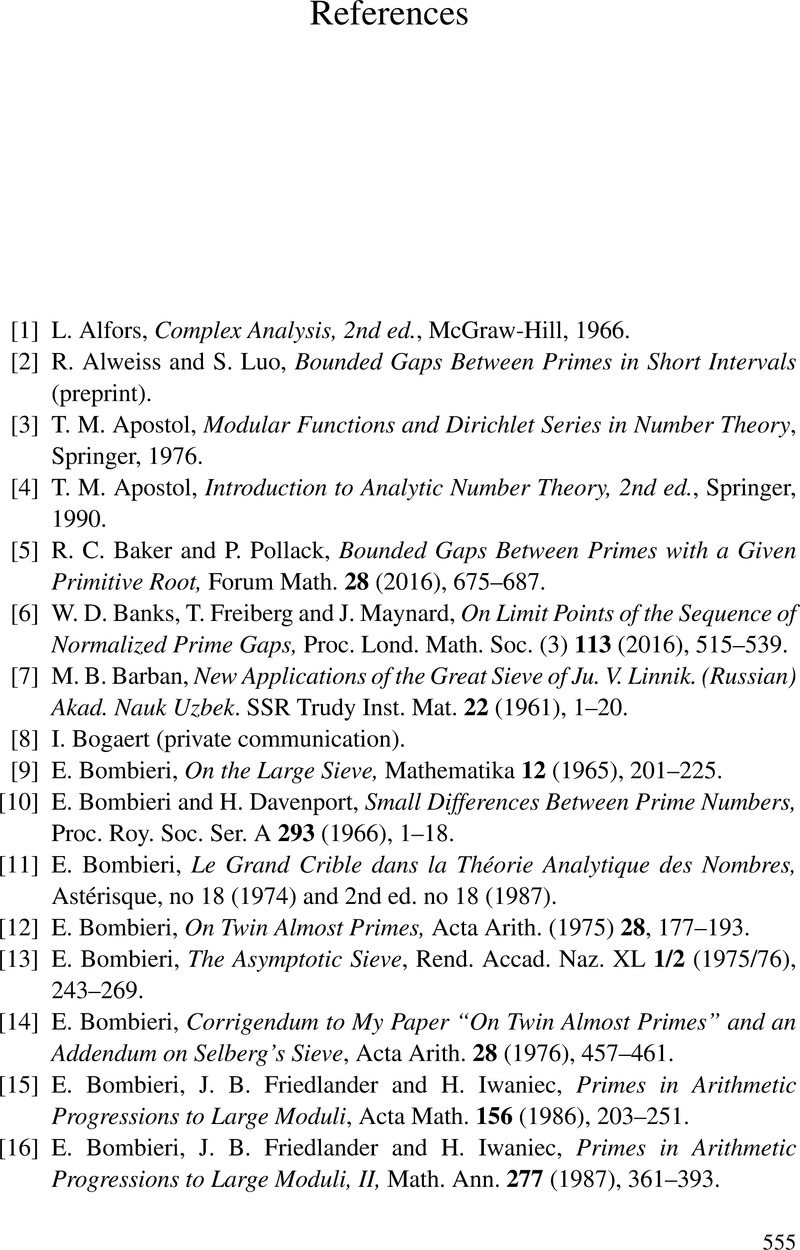Book contents
- Frontmatter
- Dedication
- Contents
- Preface
- Acknowledgements
- 1 Introduction
- 2 The Sieves of Brun and Selberg
- 3 Early Work
- 4 The Breakthrough of Goldston, Motohashi, Pintz and Yildirim
- 5 The Astounding Result of Yitang Zhang
- 6 Maynard’s Radical Simplification
- 7 Polymath’s Refinements of Maynards Results
- 8 Variations on Bombieri–Vinogradov
- 9 Further Work and the Epilogue
- Appendix A Bessel Functions of the First Kind
- Appendix B A Type of Compact Symmetric Operator
- Appendix C Solving an Optimization Problem
- Appendix D A Brun–Titchmarsh Inequality
- Appendix E The Weil Exponential Sum Bound
- Appendix F Complex Function Theory
- Appendix G The Dispersion Method of Linnik
- Appendix H One Thousand Admissible Tuples
- Appendix I PGpack Minimanual
- References
- Index
- References
References
Published online by Cambridge University Press: 10 September 2021
- Frontmatter
- Dedication
- Contents
- Preface
- Acknowledgements
- 1 Introduction
- 2 The Sieves of Brun and Selberg
- 3 Early Work
- 4 The Breakthrough of Goldston, Motohashi, Pintz and Yildirim
- 5 The Astounding Result of Yitang Zhang
- 6 Maynard’s Radical Simplification
- 7 Polymath’s Refinements of Maynards Results
- 8 Variations on Bombieri–Vinogradov
- 9 Further Work and the Epilogue
- Appendix A Bessel Functions of the First Kind
- Appendix B A Type of Compact Symmetric Operator
- Appendix C Solving an Optimization Problem
- Appendix D A Brun–Titchmarsh Inequality
- Appendix E The Weil Exponential Sum Bound
- Appendix F Complex Function Theory
- Appendix G The Dispersion Method of Linnik
- Appendix H One Thousand Admissible Tuples
- Appendix I PGpack Minimanual
- References
- Index
- References
Summary

- Type
- Chapter
- Information
- Bounded Gaps Between PrimesThe Epic Breakthroughs of the Early Twenty-First Century, pp. 555 - 566Publisher: Cambridge University PressPrint publication year: 2021



